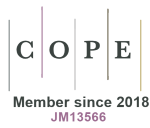Telemedicine between clinical evaluation and nutrition in Chronic Kidney Disease (CKD): experience from the feminine point of view
DOI:
https://doi.org/10.33393/gcnd.2021.2236Keywords:
Kidney diseases, Nutrition, Telemedicine, Women in medicineAbstract
In Italy, starting from 2015, the date of publication of the guidelines on the 2014-2020 Digital Growth Strategy, technological evolution in medicine has provided encouraging results. The term telemedicine is now in common use, and it is also indicated at an encyclopedic level as “the set of technical and health care monitoring tools, created through systems designed to provide quick access to both medical specialists and patients, regardless of the place where they are respectively located”. Nowadays, in the COVID era, the need for social distancing has highlighted the contribution of digital technology to healthcare in terms of access to care and healthcare spending. With regard to chronic kidney disease, telemedicine has always proved essential in improving patients’ quality of life, as in the case of peritoneal dialysis. The remote management and monitoring of patients undergoing peritoneal dialysis has not only proved to radically change and improve patients’ quality of life in replacement therapy, but has also reduced costs. There are some situations in which telemonitoring can guarantee the maintenance of an adequate quality of life for patients in the different stages of the disease. Thanks to the constant commitment of some groups of professionals where the largest part is represented by the “pink quota”, it was possible to experiment and implement evaluation protocols for the renal patient in conservative and replacement treatment in some of the most central aspects of care: medical and dietary therapy.
References
- Bibliografia
- Strategia per la crescita digitale 2014-2020. Presidenza del Consiglio dei Ministri. Versione pubblicata il 21 giugno 2016. http://presidenza.governo.it/GovernoInforma/documenti/piano_crescita_digitale.pdf (Accessed December 15, 2020)
- Telemedicina. Enciclopedia Treccani. Disponibile online in http://www.treccani.it/enciclopedia/telemedicina_%28Enciclopedia-Italiana%29/ (Accessed December 15, 2020)
- Maceratini R, Ricci F. Il medico online. Manuale di informatica medica. Verduci Editore. 2001 (Accessed December 15, 2020)
- National Strategy for e-health – Sweden. Disponibile online in https://www.digitalhealth.net/2008/04/sweden-launches-national-e-health-strategy (Accessed December 15, 2020)
- Ministero della Salute. Telemedicina Linee di Indirizzo Nazionali. Data di pubblicazione 17/03/2014. www.salute.gov.it/portale/documentazione/p6_2_2_1.jsp?lingua=italiano&id=2129 (Accessed December 15, 2020)
- Cohen MA, Powell AM, Coleman JS, Kelle JM, Livingston A, Anderson JR. Special Ambulatory Gynecologic Considerations in the Era of COVID-19 and Implications for Fu-ture Practice. Am J Obstet Gynecol. 2020 Jun 6;S0002-9378(20):30621-30629. DOI: 10.1016/j.ajog.2020.06.006 PMID: 32522513
- Murphy HR. Managing Diabetes in Pregnancy Before, During, and After COVID-19. Diabetes Technol Ther. 2020;22(6):454-461. https://doi.org/10.1089/dia.2020.0223 PMID:32396397
- Siniscalchi M, Zingone F, Savarino EV, D’Odorico A, Ciacci C. COVID-19 Pandemic Perception in Adults With Celiac Disease: An Impulse to Implement the Use of Telemedicine: COVID-19 and CeD. Dig Liver Dis. 2020;52(10):1071-1075. https://doi.org/10.1016/j.dld.2020.05.014
- Makhija D, Alscher MD, Becker S, et al. Remote Monitoring of Automated Peritoneal Dialysis Patients: Assessing Clinical and Economic Value. Telemed J E Health. 2018 Apr;24(4):315-323. https://doi.org/10.1089/tmj.2017.0046. Epub 2017 Oct 12
- Nayak KS, Ronco C, Karopadi AN, Rosner MH. Telemedicine and Remote Monitoring: Supporting the Patient on Peritoneal Dialysis. Perit Dial Int. 2016;36(4):362-366. https://doi.org/10.3747/pdi.2015.00021 PMID:27385806
- Magnus M, Sikka N, Cherian T, Lew SQ. Satisfaction and Improvements in Peritoneal Dialysis Outcomes Associated with Telehealth. Appl Clin Inform. 2017;8(1):214-225. https://doi.org/10.4338/ACI-2016-09-RA-0154 PMID:28246673
- Ronco C, Manani SM, Giuliani A, Tantillo I, Reis T, Brown EA. Remote patient management of peritoneal dialysis during COVID-19 pandemic. Perit Dial Int. 2020;40(4):363-367. https://doi.org/10.1177/0896860820927697 PMID:32597314
- Amici G. The advantages of remote patient monitoring in automated peritoneal dialysis. G Ital Nefrol. 2020;37(3):2020-vol3. PMID: 32530154
- Ministero della Salute. Documento di indirizzo per la Malattia Renale Cronica, 05/08/2014. www.salute.gov.it/portale/documentazione/p6221 (Accessed December 15, 2020)
- Wiggins KL, Harvey KS. A review of guidelines for nutrition care of renal patients. J Ren Nutr 2002; 12:190-6 DOI: 10.1053/jren.2002.34252 PMID: 12105817
- Fantuzzi AL, Chiuchiù MP, Bedogni G. Atlante fotografico delle porzioni degli alimenti. Milano: Istituto Scotti Bassani; 2005. (Accessed December 15, 2020)
- Posizione ANDID. La gestione nutrizionale del paziente con Malattia Renale Cronica. ANDID; 2004. (Accessed December 15, 2020)
- Fantuzzi AL, Bedogni G. Dieta ipoproteica e insufficienza renale cronica: manuale pratico per il dietista. Milano UTET; 2003. (Accessed December 15, 2020)
- Dwyer JT. Dietary assessment. In: Shils ME, Olson JA, Shike M, eds. Modern Nutrition in health and disease. Philadelphia: Lea & Fabriger; 1994:842-860.
- Livingstone MB, Robson PJ. Measurement of dietary intake in children. Proc Nutr Soc. 2000;59(2):279-293. https://doi.org/10.1017/S0029665100000318 PMID:10946797
- Kopple JD. Nutrition, diet and the kidney. In "Modern nutrition in health and disease", Shils ME, Olson JA, Shike M. Lea and Febiger, Philadelphia. 1994:1102-1134.
- Fouque D. Vennegor M, Wee P et al. European Best Practice Guidelines (EBPG). Nephrol Dial Transplant. 2007;22(suppl 2):ii45-ii87. https://doi.org/10.1093/ndt/gfm020 PMID:17507426
- Barsotti G, Cupisti A. The role of dietary phosphorus restriction in the conservative management of chronic renal disease. J Ren Nutr. 2005;15(1):189-192. https://doi.org/10.1053/j.jrn.2004.09.007 PMID:15648032
- Gross JL, de Azevedo MJ, Silveiro SP, Canani LH, Caramori ML, Zelmanovitz T. Diabetic nephropathy: diagnosis, prevention, and treatment. Diabetes Care. 2005;28(1):164-176. https://doi.org/10.2337/diacare.28.1.164 PMID:15616252
- Gin H, Rigalleau V, Aparicio M. Lipids, protein intake, and diabetic nephropathy. Diabetes Metab. 2000;26(suppl 4):45-53. PMID:10922973
- Cianciaruso B, Bellizzi V, Brunori G, et al. La dieta ipoproteica oggi in italia: le conclusioni del gruppo di lavoro. G Ital Nefrol. 2008;25(S-42):S54-S57.











